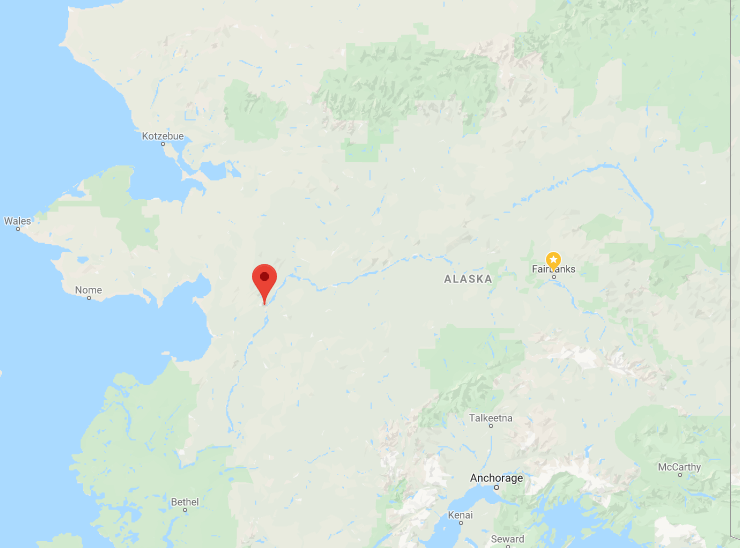Quick Facts
- Pronounced (KAL-tag)
- Current Population 186 (2012 Alaska Department of Labor Estimate)
- Legislative Districts (link to State Legislature page):
- Senate District T
- House District 39
- Judicial District 4
- Latitude: 64.3272
- Longitude: -158.7219

Location
Kaltag is located on the west bank of the Yukon River, 75 miles west of Galena and 335 miles west of Fairbanks. It is situated on a 35-foot bluff at the base of the Nulato Hills, west of the Innoko National Wildlife Refuge.
Climate
The area experiences a cold, continental climate with extreme temperature differences. The average daily high temperature during July is in the low 70s °F; the average daily low temperature during January ranges from 10 to below 0 °F. Sustained temperatures of -40 °F are common during winter. Extreme temperatures have been measured from -55 to 90 °F. Annual precipitation is 16 inches, with 74 inches of snowfall annually. The river is ice-free from mid-May through mid-October.
History
Kaltag is located in Koyukon Athabascan territory and was used as a cemetery for surrounding villages. It was located on an old portage trail that led east through the mountains to Unalakleet. The Athabascans had spring, summer, fall, and winter camps and moved as the wild game migrated. There were 12 summer fish camps located on the Yukon River between the Koyukuk River and the Nowitna River.
The village was named by Russians for the Yukons called Kaltaga. A smallpox epidemic, the first of several major epidemics, struck the Koyukon in 1839. A military telegraph line was constructed along the north side of the Yukon around 1867. Missionary activity was intense along the Yukon, and a Roman Catholic mission and school opened upriver in Nulato in 1887.
The number of steamboats on the Yukon, which supplied gold prospectors, peaked in 1900 with 46 in operation. During 1900, food shortages and a measles epidemic struck down one-third of the Native population. Kaltag was established shortly thereafter, when survivors from three nearby seasonal villages moved to the area to regroup. A post office opened in 1903 but closed in 1904. Gold seekers left the mid-Yukon after 1906, but other mining activity, such as the Galena lead mines, began operating in 1919.
As a downriver village on a major transportation route, Kaltag witnessed rapid economic change. The post office reopened in 1909 and operated until 1920. Kaltag’s first school opened in 1925. The post office reopened again in 1933. The old cemetery, which was located on Front Street, caved into the river around 1937. A watering point, airport, and clinic were constructed during the 1960s. The city government was incorporated in 1969.
Culture
Kaltag’s residents are Koyukon Athabascans. The Stick Dance Festival draws visitors from many neighboring villages. This one-week festival of potlatches is sponsored by relatives of the recently deceased, in appreciation of those who helped during their time of mourning.
Community profile data provided by the State of Alaska Department of Commerce, Community and Economic Development.
